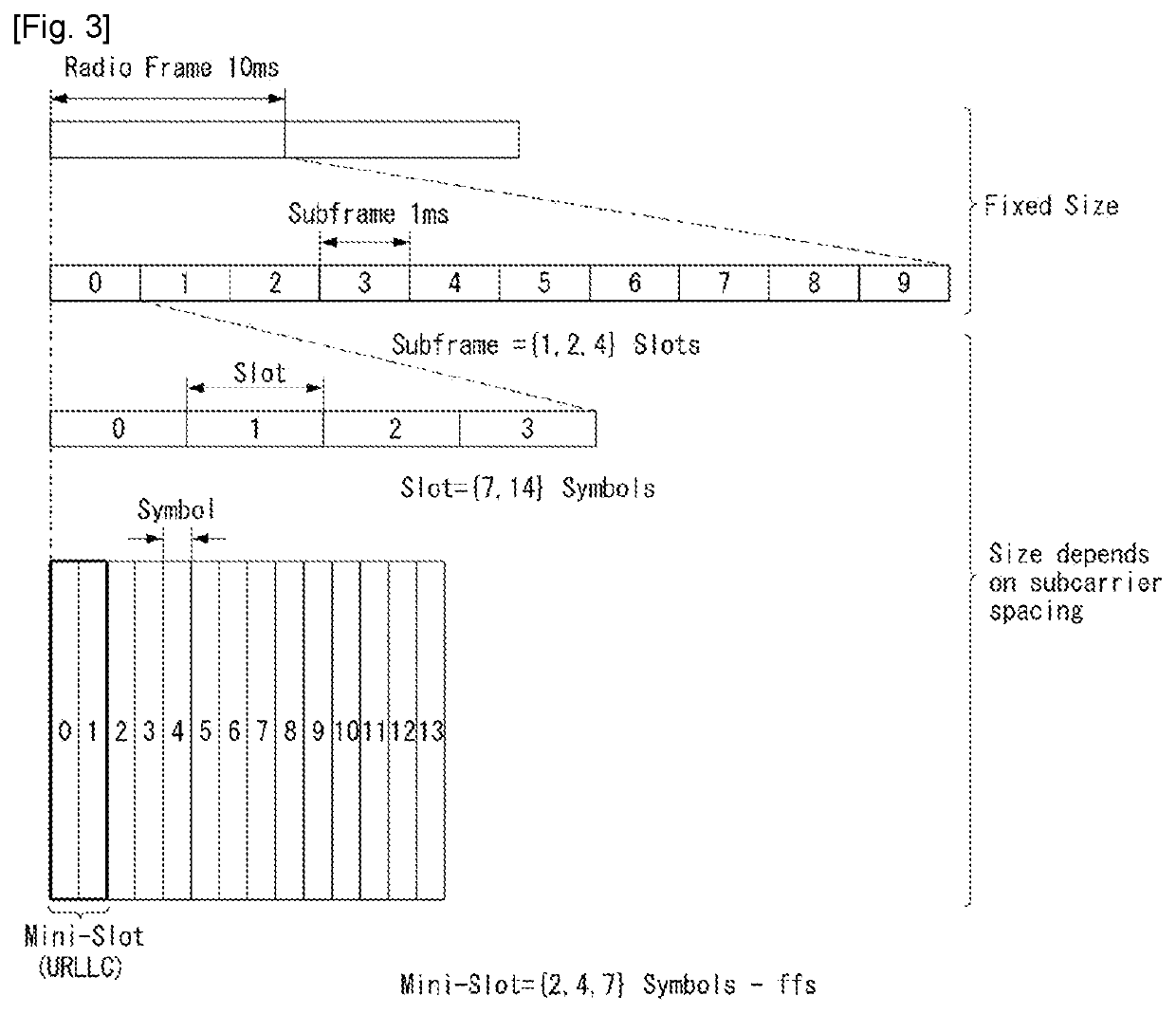Method for transmitting/receiving data in wireless communication system, and device therefor
a wireless communication and wireless communication technology, applied in the field of methods, can solve problems such as resource shortfall, and achieve the effect of efficient transmission and receiving
- Summary
- Abstract
- Description
- Claims
- Application Information
AI Technical Summary
Benefits of technology
Problems solved by technology
Method used
Image
Examples
first embodiment
[0176]In the present embodiment, for convenience of explanation, in joint transmission based on multiple DCIs, data transmitted from a first TP / TRP is referred to as a first PDSCH and data transmitted from a second TP / TRP is referred to as a second PDSCH. In the present embodiment, the transmission of two PDSCHs is described, but the method described below may be extended and applied to transmission of a plurality of PDSCHs. As described above, the first TP / TRP and the second TP / TRP may be included (or implemented) in one BS or may be included in different BSs, respectively. In the present disclosure, the PDSCH is a channel for data transmission and may be replaced with an expression such as downlink data and / or a codeword.
[0177]The first PDSCH and the second PDSCH may be transmitted by overlapping some or all of the resources. In other words, the first PDSCH and the second PDSCH may be transmitted based on any one of the fully overlapped NCJT or partially overlapped NCJT as describ...
second embodiment
[0193]In the case of a single DCI based joint transmission, a plurality of TP / TRPs may transmit one PDSCH through different layers. For example, an i-th TP / TRP may transmit the PDSCH to the terminal through an i-th layer, and one PDSCH may be transmitted through a total of i layers.
[0194]In this embodiment, for convenience of description, in a single DCI based joint transmission, a layer in which a first TP / TRP transmits a PDSCH is referred to as a first layer, and a layer in which a second TP / TRP transmits a PDSCH is referred to as a second layer. In the present embodiment, transmission of the PDSCH through two layers is described, but the method described below may be extended and applied to transmission through a plurality of layers. As described above, the first TP / TRP and the second TP / TRP may be included (or implemented) in one BS or may be included in different BSs, respectively. In the present disclosure, the PDSCH is a channel for data transmission and may be replaced with ...
third embodiment
[0201]In this embodiment, a method of scrambling a downlink control channel (e.g., PDCCH) is proposed. For PDCCH scrambling, a parameter for generating a scrambling sequence of a PDCCH and / or a parameter for generating a DMRS sequence of a PDCCH may be configured for each CORESET. As an example, the corresponding parameter may include N_ID as described in Equation 3 above.
[0202]In a case in which the CORESET of the PDCCH transmitted by each TP / TRP is separated (or classified) in multiple DCI-based joint transmission, it may be possible for each TP / TRP to use different parameters. In this embodiment, for convenience of explanation, in joint transmission based on a single DCI, a PDCCH transmitted by the first TP / TRP is referred to as a first PDCCH, and a PDCCH transmitted by the second TP / TRP is referred to as a second PDCCH. For example, the first PDCCH and the second PDCCH may be transmitted through a first CORESET and a second CORESET, respectively, and even when the first PDCCH an...
PUM
 Login to View More
Login to View More Abstract
Description
Claims
Application Information
 Login to View More
Login to View More - R&D
- Intellectual Property
- Life Sciences
- Materials
- Tech Scout
- Unparalleled Data Quality
- Higher Quality Content
- 60% Fewer Hallucinations
Browse by: Latest US Patents, China's latest patents, Technical Efficacy Thesaurus, Application Domain, Technology Topic, Popular Technical Reports.
© 2025 PatSnap. All rights reserved.Legal|Privacy policy|Modern Slavery Act Transparency Statement|Sitemap|About US| Contact US: help@patsnap.com



